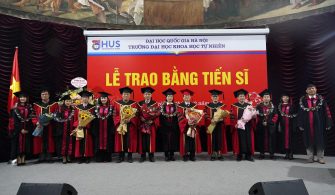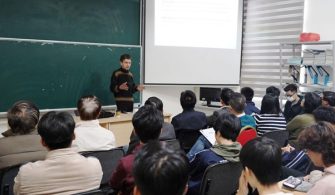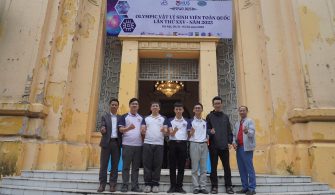VIỆN VẬT LÝ
Institute of physics
————————————
SEMINAR
VẬT LÝ LÝ THUYẾT VÀ VẬT LÝ TÍNH TOÁN
Theoretical and computational physics seminar
Tiêu đề/Title:
“Particle-hole symmetry and composite fermions theories of Jain sequence”
Người trình bày/Speaker:
TS Nguyễn Xuân Dũng
Rudolf center of theoretical physics, University of Oxford.
Thời gian/Time:
10:00 sáng, Thứ Tư, ngày 17-4-2019
(10:00 AM, Wednesday, 17 April 2019)
Địa điểm/Venue:
Phòng họp tầng 6, nhà 2H, 18 Hoàng Quốc Việt, Hà Nội
Tóm tắt/Abstract:
An interacting two-dimensional electron gas in a strong magnetic field can form nontrivial topologically ordered gapped states, the fractional quantum Hall (FQH) states. The composite fermion construction was introduced by Jain to understand strongly correlated electron systems such as in FQH. While the connection between original electrons and composite fermions is unclear, composite fermion has been employed to study fractional quantum Hall (FQH) with tremendous success. The composite fermion construction was used by Halperin, Lee and Read (HLR) to explore the half filling state $\nu=1/2$, which can be thought of as the large $N$ limit of Jain’s sequences $\nu=N/(2N+1), (N+1)/(2N+1)$. The HLR theory predicts precisely the appearance of a Fermi-liquid behavior of quasi-particle near half filling state. However, there are still some issues related to the composite fermion model, one of them is the particle-hole symmetry of the lowest Landau level (LLL). The idea of Dirac composite fermion, proposed recently by Son, can be the resolution of this question. In this talk, I will briefly introduce the Dirac composite fermion model and show how to investigate this model to calculate physical quantities of incompressible states that belong to Jain’s sequences $\nu=N/(2N+1)$ and $\nu=(N+1)/(2N+1)$ in the large $n$ limit. The particle-hole symmetry is satisfied explicitly in closed form, the universal topological coefficients of Jain’s states are reproduced exactly in the Dirac composite fermion model. The magnetoroton dispersion relation is derived and confirmed by experimental results.









